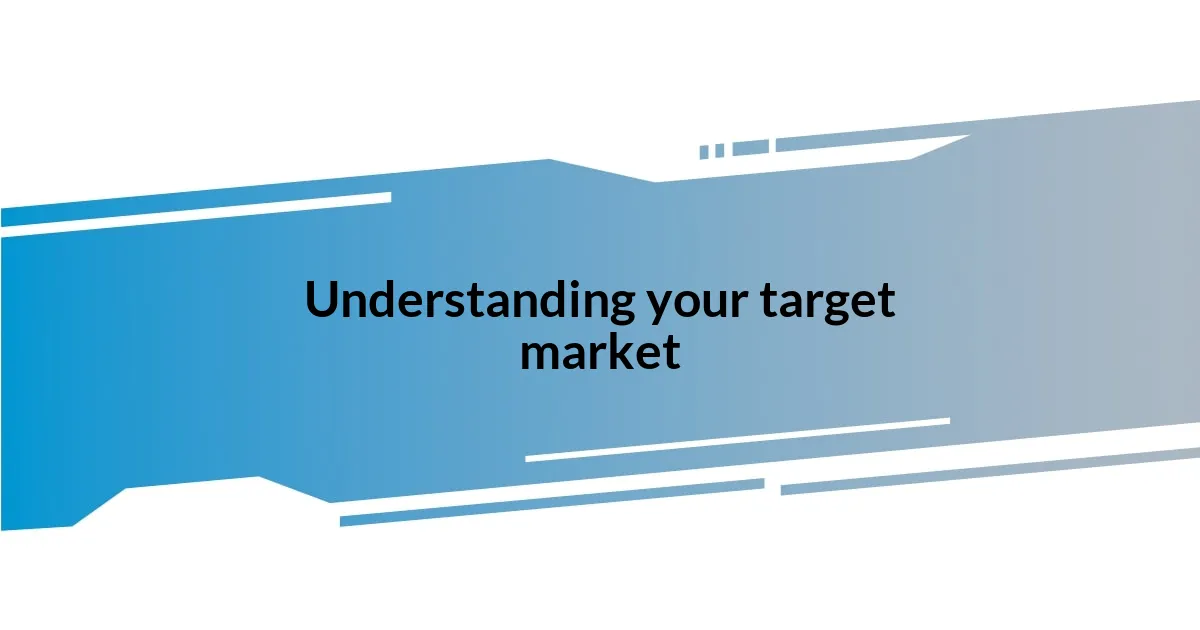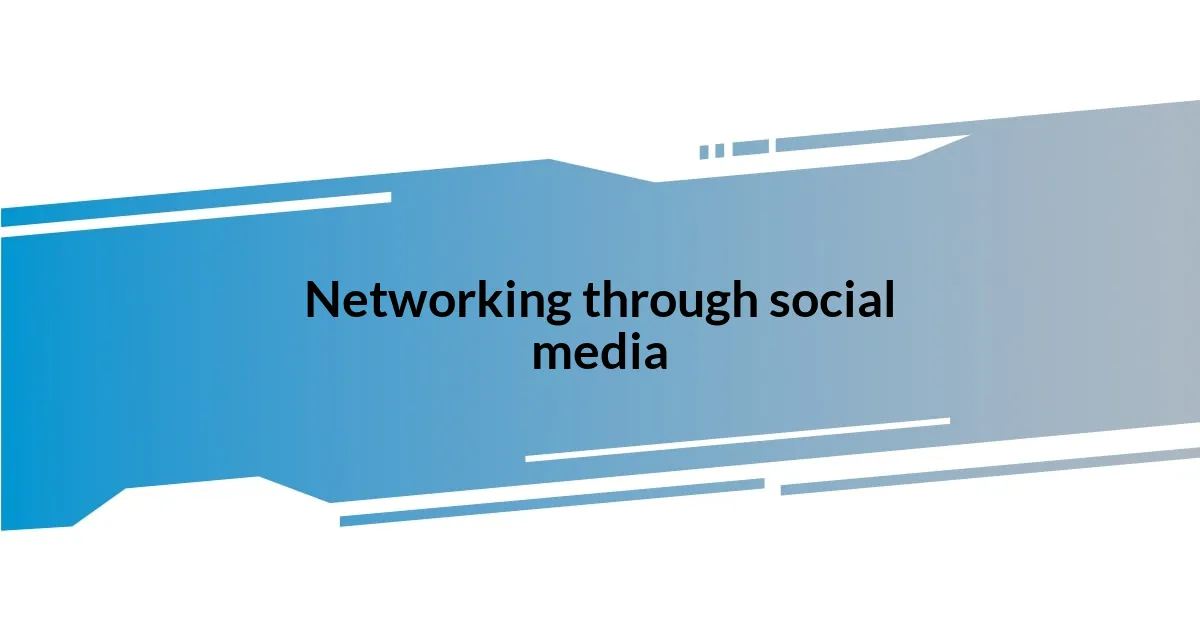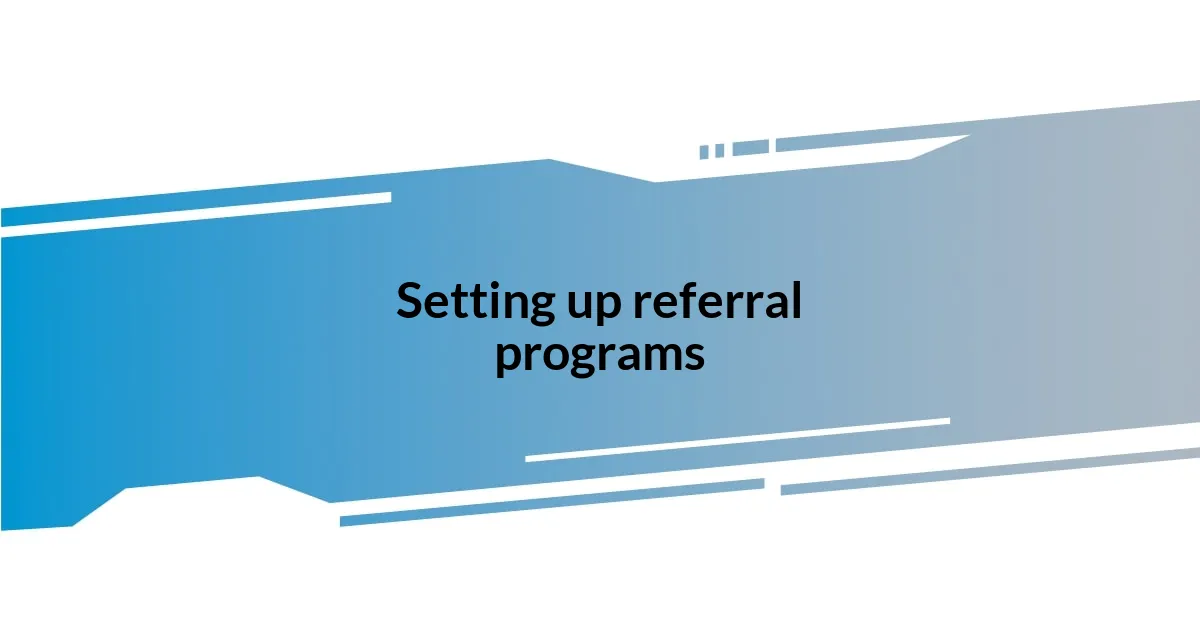Key takeaways:
- Understanding and focusing on a specific target market enhances client engagement and connection.
- Building a consistent online presence through valuable content fosters trust and attracts potential clients.
- Attending industry events and establishing referral programs significantly expand networking opportunities and client relationships.

Understanding your target market
Understanding your target market is essential for building a successful global client network. When I first started out, I remember making the mistake of trying to appeal to everyone. It was overwhelming; I often found myself frustrated and not getting anywhere. This experience taught me the power of focusing my efforts on a specific audience.
One significant insight came when I wandered into an industry conference, surrounded by potential clients. I realized that diving deep into their unique needs and pain points transformed my approach. For instance, instead of a generic pitch, I tailored my services based on their specific challenges. This shift not only resonated with them but also fostered authentic connections. Have you ever felt that spark when you truly understand what someone else is going through? That’s the feeling I chase every time I engage with a new client.
Observing trends and preferences within your niche can reveal invaluable insights. I often sift through social media feedback and online forums to gather real-world testimonies. These snippets help paint a vivid picture of what my audience values. It’s not just about demographics; it’s about the emotions, aspirations, and even frustrations that shape their buying decisions. Have you explored your target market’s interests lately? You might be surprised at how this knowledge can elevate your interactions and even your offerings.

Building an online presence
Building an online presence is the cornerstone of establishing a global client network. In my early days, I underestimated the power of social media. However, once I started sharing valuable content and engaging with others, I noticed a remarkable shift. It was like turning on a light in a dark room; suddenly, people began to notice and interact with me. I remember my first breakthrough post on LinkedIn where I shared a personal story related to my journey. The engagement was overwhelming, and it opened doors to conversations I never anticipated.
Today, I am a firm believer in the importance of consistency. When I began dedicating time to my blog and social media profiles, the results were striking. Regularly updating these platforms not only showcased my expertise but also built trust among my audience. I’ll never forget when a connection reached out, saying my insights had significantly impacted their business decisions. That kind of feedback is what helps to solidify your online presence and transforms casual followers into clients. Are you committing to your online presence consistently? It’s a vital step that can yield rewards over time.
Creating a cohesive brand across different platforms also plays a crucial role. I’ve realized that using the same bio, visuals, and messaging helps reinforce my identity. For instance, when I redesigned my website to align with my social media profiles, I saw an uptick in inquiries. People appreciate familiarity, and when they recognize your brand across platforms, it fosters confidence. Maintaining this consistency ultimately led to more referrals and business opportunities. Have you thought about how a unified online presence might benefit your brand?
| Social Media Impact | Website Consistency |
|---|---|
| Engagement increases when sharing valuable content. | Unified branding enhances recognition and trust. |
| Personal stories create authentic connections. | Clear messaging attracts the right audience. |

Networking through social media
Connecting through social media has been an eye-opener for me in building a global client network. When I first ventured into this space, I stumbled upon a world brimming with opportunities to engage with diverse professionals. A memorable moment for me was when I reached out to an influencer in my niche purely out of curiosity. I was pleasantly surprised when they responded and shared my post with their audience. That single interaction not only broadened my reach but also reinforced the idea that everyone, no matter how established, is just a message away. Have you ever reached out to someone you admired? You might find that they are more receptive than you think.
To effectively network through social media, consider focusing on these key strategies:
- Identify and follow industry leaders to stay updated and join conversations.
- Engage authentically by commenting thoughtfully on their posts, showing you value their insights.
- Share content consistently that resonates with your audience, creating a mix of personal and professional experiences.
- Participate in niche-specific groups where discussions can lead to meaningful connections.
- Offer support and encouragement to others in your network; this reciprocity often leads to mutually beneficial relationships.
These strategies have fundamentally changed how I approach networking. The more genuine connections I foster, the more my global client network expands. What strategies would you consider trying to deepen your own connections on social media?

Leveraging industry events
Attending industry events has been a pivotal part of my journey to building a global client network. I remember walking into my first conference, feeling a mix of excitement and apprehension. Instead of just mingling aimlessly, I approached it with a strategy. I sought out sessions related to my niche and made it a point to connect with speakers and fellow attendees afterward. That simple act of being proactive led to valuable discussions and, ultimately, lasting connections that have influenced my career.
One of the most rewarding experiences at an industry event happened when I joined a small roundtable discussion. I shared my insights on a project I was passionate about, and to my surprise, others resonated with my ideas. This led to meaningful conversations at lunch, where I was able to exchange contact information with several industry leaders. It reinforced my belief that these gatherings are more than just presentations; they’re opportunities to share knowledge and foster collaboration. Have you ever taken the leap to speak up in a group setting? The potential rewards are often greater than the initial nerves.
I’ve also found that following up post-event is just as crucial as attending. After every conference, I make it a point to reach out to those I’ve met, either through a simple thank-you email or a personalized LinkedIn message. It keeps the dialogue alive and often sparks new ideas or partnerships. In fact, one of my best collaborations stemmed from a follow-up conversation where we brainstormed ways to work together. Have you thought about how you can maintain those connections once the event is over? It’s all about nurturing relationships and leveraging the momentum you’ve gained.

Setting up referral programs
Setting up referral programs has been a game changer in my networking strategy. When I launched my first referral initiative, I felt a mix of excitement and uncertainty. To inspire my clients, I offered them incentives for each new customer they brought in. The surprise for me was how quickly my existing clients jumped at the chance to share my services. It taught me that people love sharing valuable experiences, often more than I ever imagined.
What I discovered is that clarity is key in these programs. I remember crafting clear guidelines that outlined exactly how the referral process would work. This wasn’t just about perks; it was about making it easy for clients to refer others. A simple form on my website and a dedicated landing page made all the difference. Have you put yourself in your clients’ shoes? Think about how easy or complicated it might be for them to refer someone.
As my program grew, I also realized the importance of appreciation. Early on, I sent thank-you notes to referrers, and seeing their reactions was heartwarming. It felt good to acknowledge their contribution and, in return, their enthusiasm deepened. This ongoing dialogue around gratitude made them feel more invested in my success. What small gestures do you think could strengthen your network? Sometimes, it’s the little things that create lasting bonds.

Maintaining client relationships
Maintaining client relationships is like nurturing a garden; it takes consistent attention and care. One strategy that has worked wonders for me is regular check-ins. I set reminders to touch base with clients every few months, whether through a friendly email or a quick phone call. This not only keeps the connection alive but often leads to discussions about their evolving needs and interests. Have you ever realized how much a simple message can brighten someone’s day? Those small gestures mean a lot.
I also believe in the power of sending personalized updates or sharing relevant industry news. When I came across an article that aligned perfectly with a client’s recent project, I sent it their way. Their appreciation for the gesture reinforced our bond and opened up a deeper dialogue about future opportunities. I often wonder, how can we make our clients feel valued beyond the services we offer? Showing genuine investment in their success creates a partnership rather than a transaction.
Additionally, celebrating milestones together can significantly strengthen those ties. I have a habit of sending a small gift or a handwritten note to clients when they achieve something noteworthy. Whether it’s a business anniversary or a successful project launch, acknowledging these moments fosters a sense of community. It makes me think, what do you want to celebrate with your clients? Finding shared moments of joy can truly elevate the relationship, and who wouldn’t want to be remembered for the special times?

Expanding into new markets
Expanding into new markets is like unlocking a new chapter in your business story. I vividly remember my first foray into international waters—it felt both thrilling and a bit daunting. I invested a significant amount of time researching local customs and consumer behavior, as I wanted to ensure my message resonated with the new audience. Have you ever tried to adapt your style to fit a different culture? It’s a challenging yet rewarding experience that teaches so much about flexibility and creativity.
One effective strategy I embraced was establishing partnerships with local businesses. When I entered the European market, I collaborated with a well-regarded local entity to gain credibility. They not only understood the landscape but also had a loyal customer base that trusted them. That alliance opened doors; it was as if I had a guide leading me through a maze of unfamiliar territory. Isn’t it fascinating how collaboration can amplify growth in ways we wouldn’t achieve alone?
Moreover, I learned the power of tailored marketing strategies. What worked in one country didn’t necessarily translate to another. For instance, a campaign that was successful in the U.S. fell flat when introduced in Asia. So, I shifted to more localized content, often enlisting local talent to help me craft messages that resonated authentically. This adaptability made all the difference, and it made me wonder—how often do we stick too closely to our original ideas instead of embracing the unique preferences of new audiences? Learning to listen and adapt not only expands market reach but also fosters deeper connections with diverse customers.
